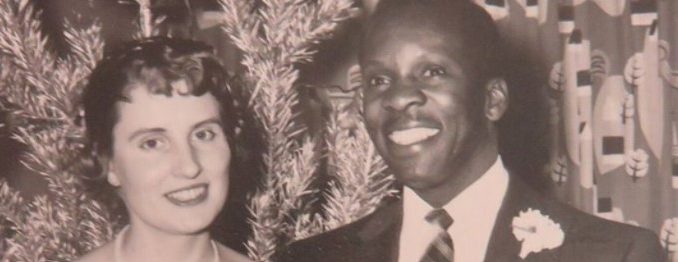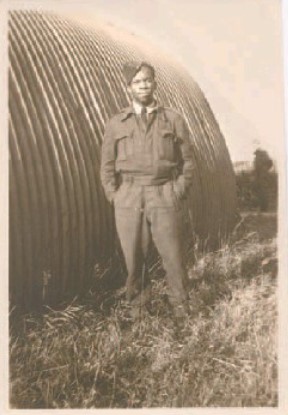
At the beginning of World War II all the major powers had developed at least a minimal radar capability to combat the lack of secrecy when using radio, but Britain was the technical leader in radar research, including designing microwave radar. They had developed a strong defense system with radar fully integrated as part of its national air defense system.
But Britain, exhausted after the Battle of Britain and the failure at Dunkirk, had to rely on its allies, particularly Canada to train and supply their need for new crew. Prime Minister King was totally in support of creating new air force training bases, far away from the prying eyes of the Axis. As part of the British Commonwealth Air Training Plan (BCATP) conceived as early as 1939, these locations trained thousands of Allied soldiers, sailors and airmen and women to support the war effort. Canada, by the end of 1941, was called the Aerodrome of Democracy by President Roosevelt.

Photo Credit: Ottawa Citizen
In 1941, No. 31 Radio School opened on July 20th in Clinton, Ontario to begin radar design and maintenance classes. Not just anyone could come to this school. You had to be smart and mathematically gifted. Between July 20 and November 5, 1941 63 students had already been unable to complete the training and all of their notebooks were confiscated in fear of the potential security leak.
Samuel Estwick had tried to enlist in 1940 but was rejected because he was Black. Writing to his Member of Parliament in protest, Mr. Estwick successfully enlisted on December 17, 1941 and was accepted into the new radar mechanic trade because of his exceptional mathematical skill. After upgrading his physics and mathematical knowledge at Mt Allison University, Aircraftman Estwick was sent to No. 31 Radio School in July 1942. Graduating in the top three of his class in September 1942, Aircraftman Estwick was not promoted to the rank of an officer.
He was immediately sent to England and then sent to serve in Southeast Asia. Unfortunately, newly promoted Corporal Estwick encountered problems with South African soldiers who took offense to his presence. In one case, a Royal Marine Commando drove the aggressor away. In the other instance, Corporal Estwick defended himself and had to be pulled off by his fellow radar mechanics. This incident led to the realization by RCAF that Corporal Estwick was safer serving in England than in the South Asian theatre. His path back to England was riddled with detours. On his return trip home from Mumbai, his
skill was discovered by RAF Station Helwan and 38 Squadron RAF situated in Egypt in 1943. He returned to England in 1944 and was posted to 415 Squadron RCAF and then No. 6 Group of Bomber Command attacking strategic and tactical objectives across the Western Front for the remainder of the war.
In June 1945, Corporal Estwick was repatriated back to Canada and applied to remain in the RCAF. In 1946 he was promoted to Sergeant and was sent as an instructor to RCAF No. 1 Radar and Communications School, the former No. 31 Radio School. Promoted to Warrant Officer Class 1, and then a Flying Officer, he was posted to CFS Mont Apica and CFS Lac St. Denis as part of the Pinetree Line before being sent back to RCAF No. 1 Radar and Communications School in charge of officer training. By 1961 he was training telecommunications officers. Prior to his retirement in 1963, with over 20 years of service Flying Officer Estwick was promoted to Flight Lieutenant Estwick.
Flight Lieutenant Estwick was active in multiple veterans associations and his community for the rest of his life. He died in 2008 and was survived by his wife Louise and children Eric and Leslie.
Museum Happenings
The museum will be reopening to the public on February 7, 2022. We will be open Monday to Friday from 0900-1300. Please purchase your free ticket online at the Mercury Shop at https://themercuryshop.myshopify.com/pages/museum-tickets.
Proof of vaccination is required for admission.
Mercury Shop
Want to give the kids, or someone you know a fun gift? Have you considered putting their face (or yours) on a mug or a mousepad? In addition to our engraving services, we also do sublimation also known as heating pressing, where we can take an image and put it on a mug, a shirt, a licence plate, mousepad, and a variety of other items we carry in stock.
March Break is coming up and the Mercury Shop has you covered! We sell a variety of educational and fun children’s toys and games including a number of Snap Circuit kits in stock, as well as fun toys such as spy items, adventurer toys, and puzzles.
We have a new selection of wooden cutting boards and other gifts for the special person in your life! And we can personalize that item for you to make it extra special. Have any questions for us? You can contact us at 613-541-5395 or mercuryshop@c-and-e-museum.org Find our website here: https://themercuryshop.myshopify.com/
Megan Charlong, Mercury Shop Supervisor
